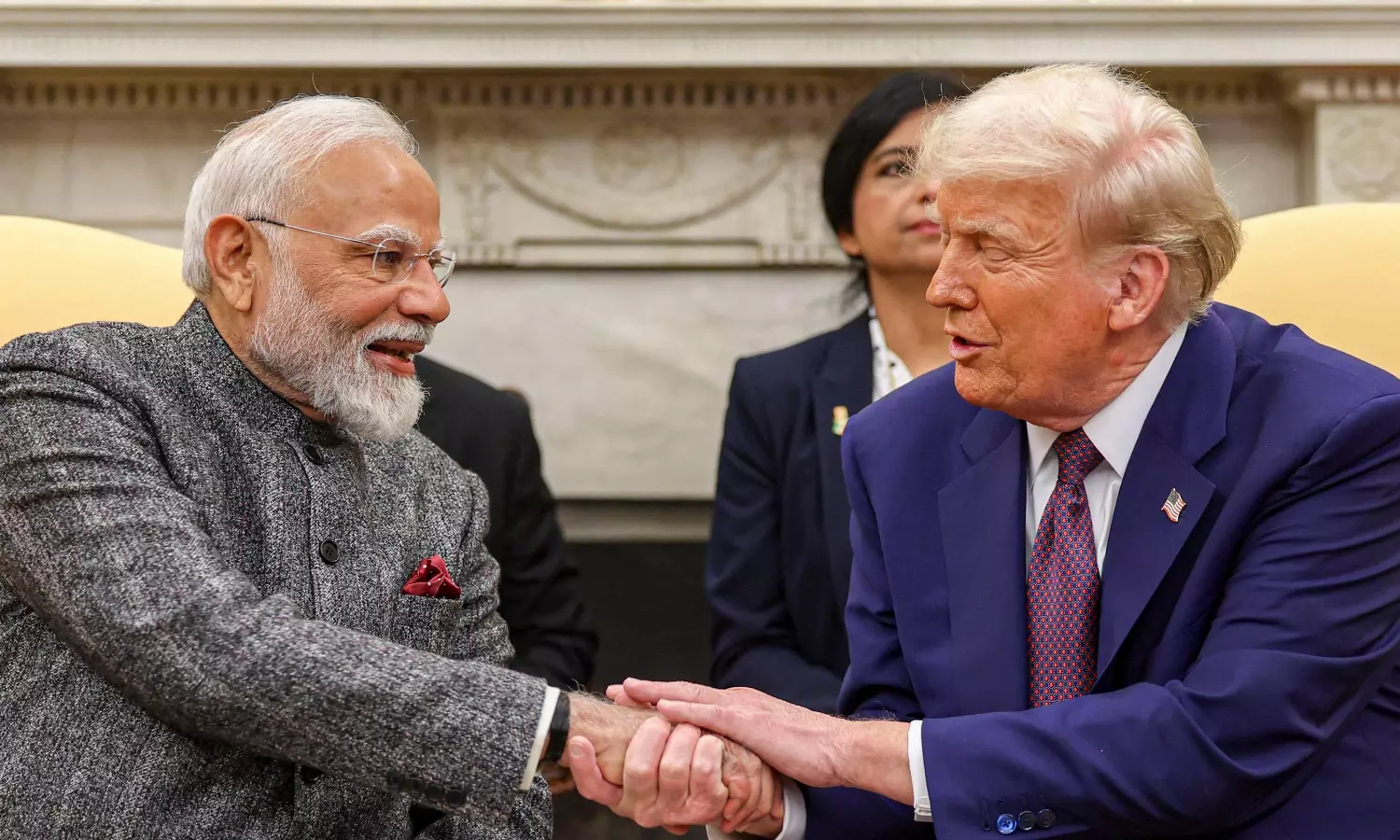US to Go Ahead With Reciprocal Tariffs and Lower Trade Deficit With India
India to Boost Defense and Energy Imports as Both Nations Seek to Address Trade Imbalances;

Chennai: While criticising India as a country with “unfair and strong tariffs’, US President Donald Trump reiterated that the country will impose reciprocal tariffs on countries having high import duties. While Trump wants India to increase defence, oil and gas purchases to lower the trade deficit with the US, he did not provide exemptions for steel and aluminium imports from India.
“India imposes a 30, 40, 60, and even 70 per cent tariff on so many goods, and in some cases, far more than that. For instance, a 70 per cent tariff on US cars entering India makes it almost impossible to sell those cars,” he said.
He also reiterated his stand to impose reciprocal duties of countries levying high import duties. The industry has been hoping that Trump-Modi talks will see a decision on the retention of exemptions on steel and aluminium imports from India.
Trump also was concerned about the trade deficit with India and said that defence goods, oil and natural gas would address the deficit. India imports $132 billion worth of crude oil and $13 billion of natural gas. But, the transportation of both from the US is tough and it has to be seen whether US crude prices are on par with the discounted Russian crude.
India has a $190 billion trade with India with merchandise trade around $123 billion and a goods trade surplus of $35 billion. While a large per cent of US goods are levied with five per cent and lesser duties, luxury cars, motorcycles, wines, whiskey, toys and some agricultural products carry higher duties.
India faces high US tariffs on goods like textiles, garments, and footwear, ranging between 15-35 per cent. However, there was no mention of lowering higher tariffs by the US.
“Given the differences in the export profiles of the two countries, reciprocal tariffs may not have a significant impact. India does not import the same products it exports. Further, 75 per cent value of US exports to India have an average tariff of less than 5 per cent,” said Ajay Srivastava, founder, GTRI.
Both sides agreed to negotiate a trade deal and finalise a new defence framework. However, there is no clarity on whether it will be a deal on reciprocal tariffs or a free trade agreement as expected by India.
Trump’s announcement of growing bilateral trade to $500 billion by 2030 looks doubtful as it envisages 163 per cent growth from the current trade of $190 billion in five years. Prime Minister Modi, on the other hand, said India aims at doubling trade with the US by 2030.

